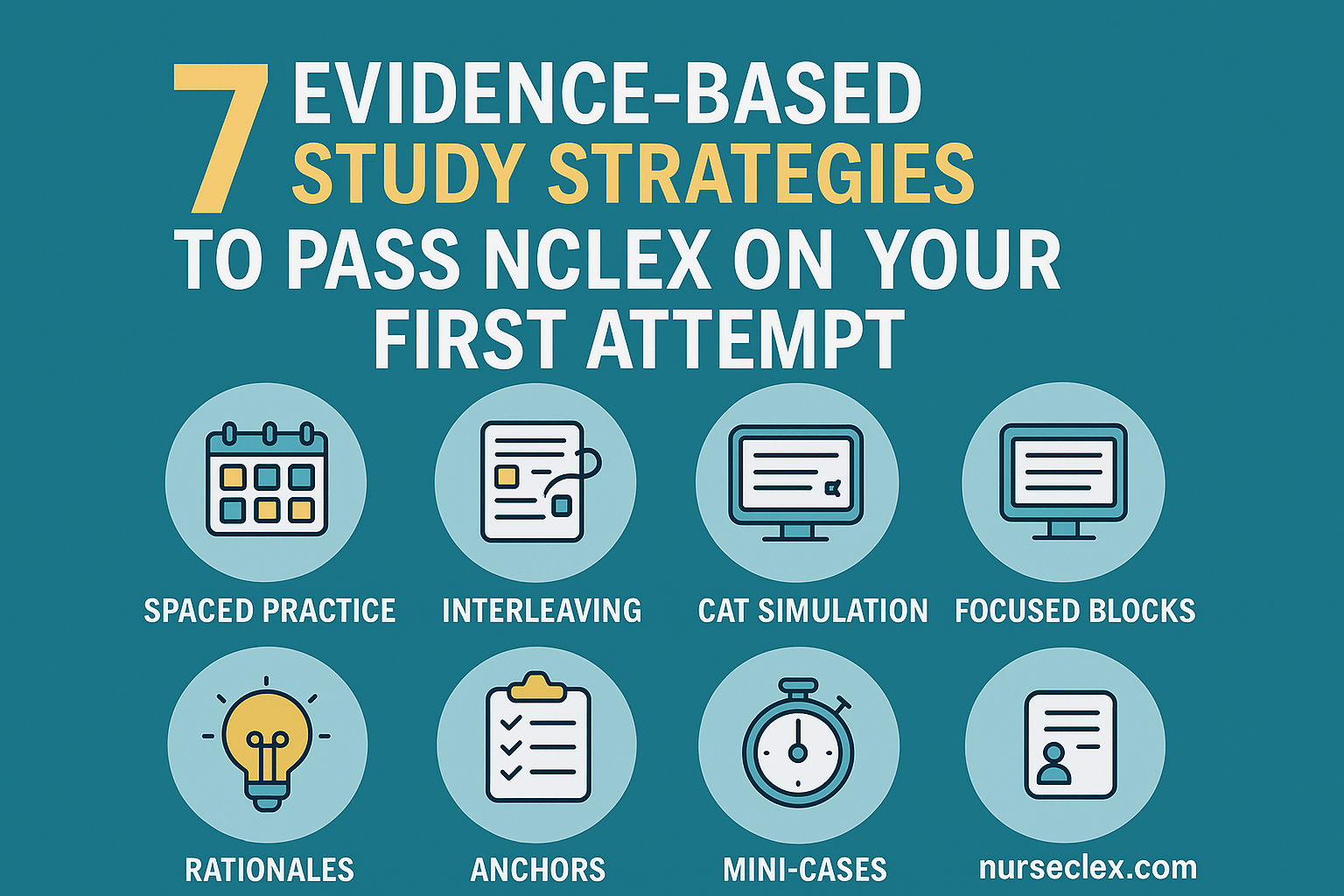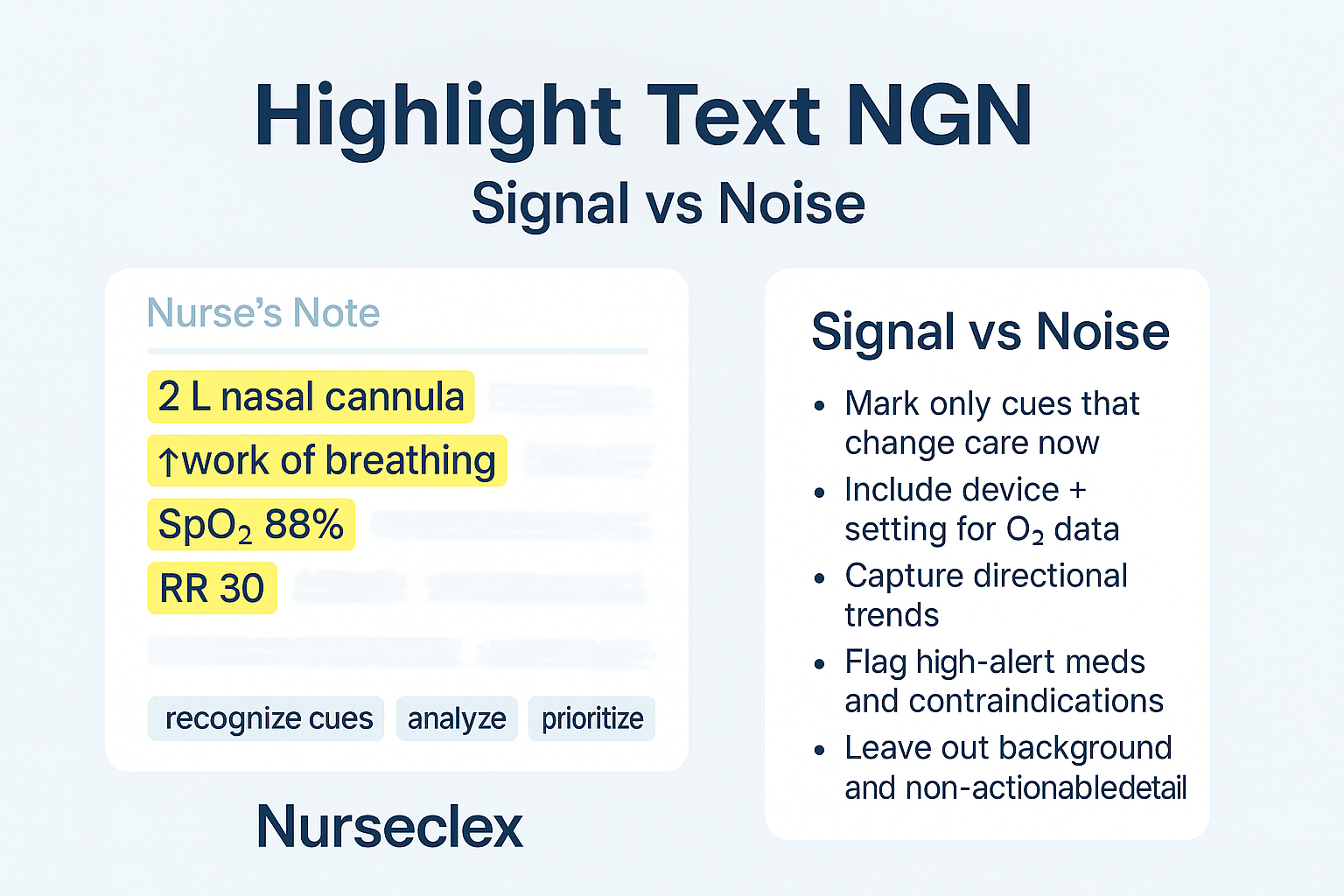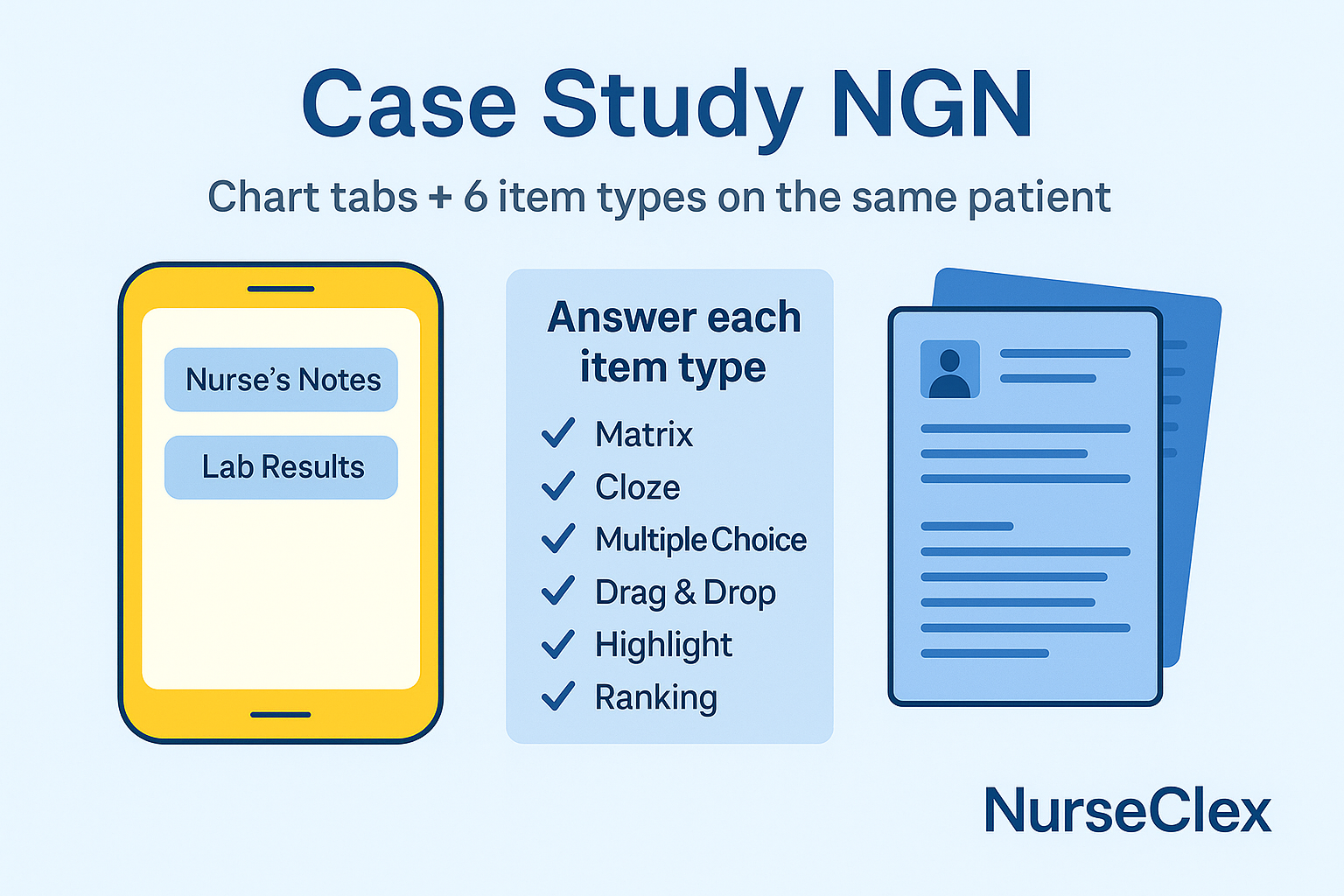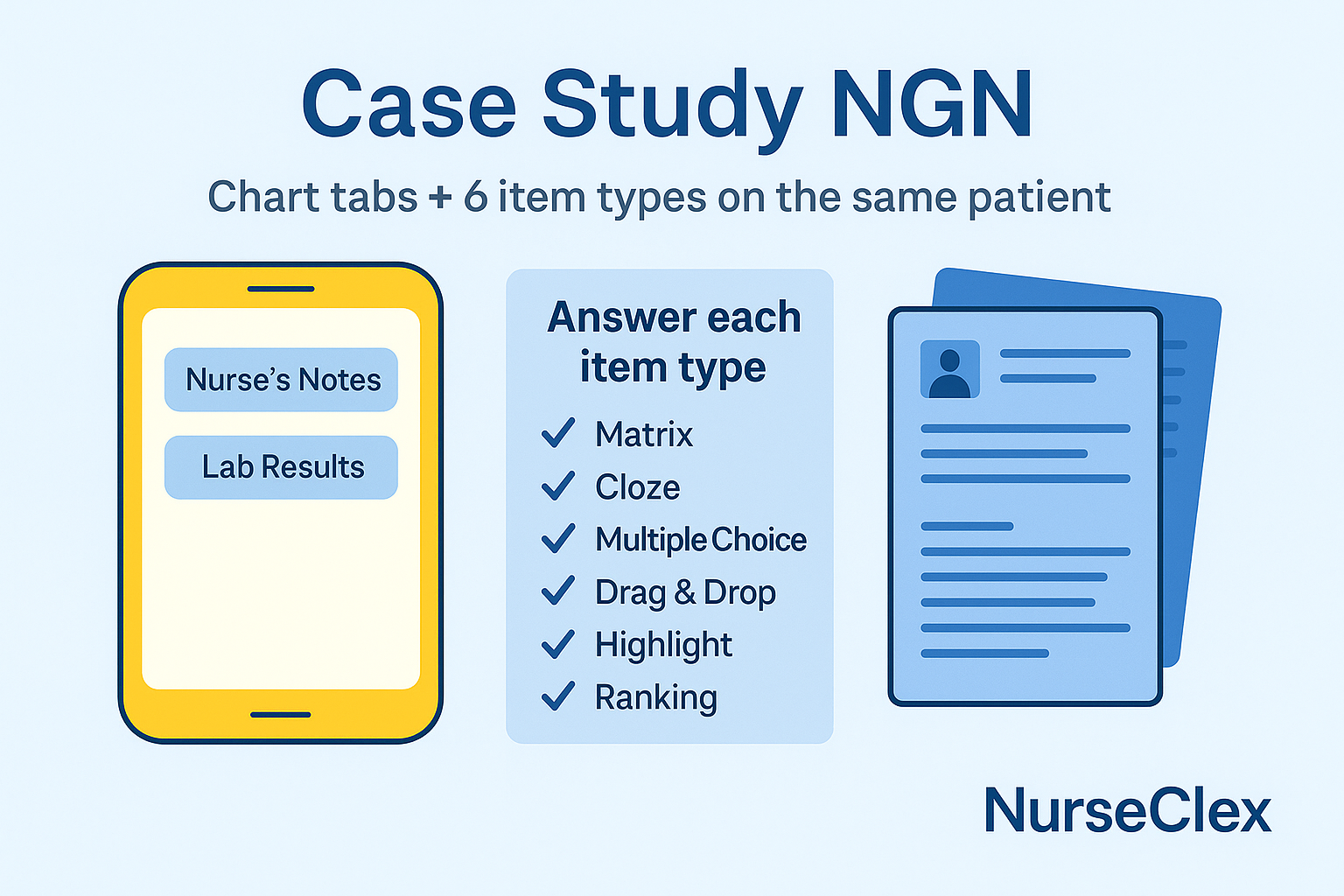Cue recognition is the first move in clinical judgment. When you pull the right data—vitals, labs, symptoms, and trends—everything that follows gets easier. In this guide you’ll learn seven high-yield cue recognition patterns, quick drills, and what to ignore.
New to how this fits into NGN? Read: Clinical Judgment vs Critical Thinking.
Image: What counts as a cue
Alt: “Cue recognition patterns diagram showing trend cues, safety cues, and noise to ignore”
1) Trend beats a single value
A single abnormal number can be a blip. A downward trend is a warning.
Example: SpO₂ 93 → 90 → 88 on the same device = worsening oxygenation.
Focus on: direction of change and unchanged device/flow.
Learn more: Trend Items: Safe vs Improving vs Deteriorating
2) Cluster related cues
Three or more cues can form one story.
Example: Fever + flank pain + dysuria → pyelonephritis (upper UTI) over cystitis.
Focus on: system match and “upper vs lower” clues.
3) Outlier labs that match the bedside
Numbers matter more when signs agree.
Example: K⁺ 6.2 and peaked T waves → treat hyperkalemia risks first.
Focus on: the lab and the matching monitor/assessment cue.
4) New-onset changes outrank baseline
“New” means act now. Chronic findings are background.
Example: New confusion in an older adult = acute problem until proven otherwise.
Focus on: the words new, sudden, or rapid.
5) Device–patient mismatch
If support does not meet need, expect escalation.
Example: Rising work of breathing on low-flow NC → consider device change.
Focus on: device type/flow, actual saturation, patient effort.
6) Medication–effect mismatch
When the expected effect does not appear—or goes too far—flag it.
Example: Post-opioid RR 10 and somnolent → hold dose, reassess, consider reversal per orders.
Focus on: med given, expected vs actual response, safety risks.
7) Environment safety cues
Safety cues often hide in plain sight.
Example: Cluttered floor + confused patient + bed high → fall risk.
Focus on: hazards, supervision, room setup.
Fast drills (10 seconds each)
-
Pick two most relevant cues: SpO₂ 95 → 92 → 89 on 2 L; RR 24; “anxious.”
→ Trend ↓ SpO₂ and ↑ work of breathing. -
Which cluster fits DVT?
→ Unilateral calf pain, warmth, swelling. -
Which matters now?
→ New confusion + temp 38.8 °C over stable post-op pain 8/10.
What to ignore (most of the time)
-
“Interesting” numbers with no context
-
Vague symptoms that do not change the immediate plan
-
Duplicate statements that say the same thing
How to scan a stem in 30 seconds
-
Spot the system (cardio, resp, neuro).
-
Mark safety-critical cues: airway, perfusion, neuro.
-
Check for trend words and confirm same device/conditions.
-
Circle new/sudden/rapid changes.
-
Pair outlier labs with matching signs.
-
Save actions for the next step.
Ready to move on? Go to: From Cues to Hypotheses: Analysis & Prioritization.
Worked mini-case
Stem (short): POD1 abdominal surgery. HR 118, BP 100/64, RR 24, SpO₂ 92% RA, temp 38.5 °C, pain 7/10, calf tenderness RLE.
-
Keep: tachycardia, low-normal BP, low SpO₂, unilateral calf tenderness, fever.
-
Drop: pain score (important but not priority), “POD1” as a cue.
-
Why: These cues cluster as VTE/DVT → PE risk, which is safety-critical.
Next step (in its own item): choose the priority problem, then act. Partial credit can still help—see: NGN Partial-Credit Scoring.
Quick checklist (print this)
-
I pulled 3–5 relevant cues
-
I confirmed a trend (or none)
-
I marked new/sudden/rapid changes
-
I paired labs with matching signs
-
I left interventions for the next step
FAQs
How many cues should I pick?
Usually 3–5—enough to define the problem without padding.
Do extra wrong cues lower score?
They can. On items with partial credit, irrelevant choices may reduce points. Stay precise.
How do I improve speed?
Drill cue recognition patterns with timers. Start with trends and safety cues.
Image: Trend cue example
Alt: “Cue recognition patterns example showing SpO₂ 93→90→88 on 2 L nasal cannula”
Keep learning
Authoritative resources:
-
NCSBN: Clinical Judgment Model
-
NCSBN: Next Generation NCLEX overview







